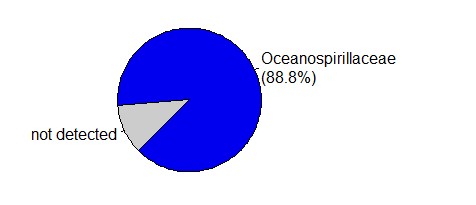The Family Oceanospirillaceae
The Oceanospirillaceae are a family of rod-shaped or spiral, free-swimming Bacteria widely distributed throughout the marine environment. These are generally aerobic heterotrophs feeding on amino acids and other organic acids including acetate.
They also degrade DMSP, and play important roles in the marine sulfur and carbon cycles.
Oceanospirillaceae on coral reefs
Bacteria from the family Oceanospirillaceae are frequently reported as members of the coral microbiome.
This is likely related to their consumption of DMSP, which is produced by algal symbionts in the corals. Supporting this view, Oceanospirillaceae levels are correlated with the algal symbionts in corals and related animals.
Growth studies show that nutrients exuded from coral reef associated algae also promote the growth of this group.
Oceanospirillaceae in reef tanks

Bacteria from the family Oceanospirillaceae are present in most reef tank samples.

Bacteria from the family Oceanospirillaceae generally make up a small fraction of the community, a little over 1%. But this group varies widely across tanks, from <0.1% in some tanks to nearly 50% in others.

The free-living Oceanospirillaceae make up a larger fraction of the community in water samples than biofilm communities.
Read more
Wikipedia: Oceanospirillaceae
OBIS: Oceanospirillaceae
Adjusting your Oceanospirillaceae levels
-
Increasing your levels
-
Carbon dosing with acetate (vinegar)
-
Dose with phytoplankton, most of which produce DMSP
-
Decreasing your levels
-
Discontinue carbon dosing (especially acetate)
-
Deep clean to reduce dinoflagellate and diatom levels, if present
Testing your tank for Oceanospirillaceae
Our standard Microbiome Test includes information on the levels of Oceanospirillaceae in your tank.
This family blooms in response to nutrients that we can’t easily test for (e.g. DMSP), so measuring this group sheds light on the levels of these hidden nutrient sources. Test your tank today to find out what the Oceanospirillaceae have to say about your tank’s nutrient levels!